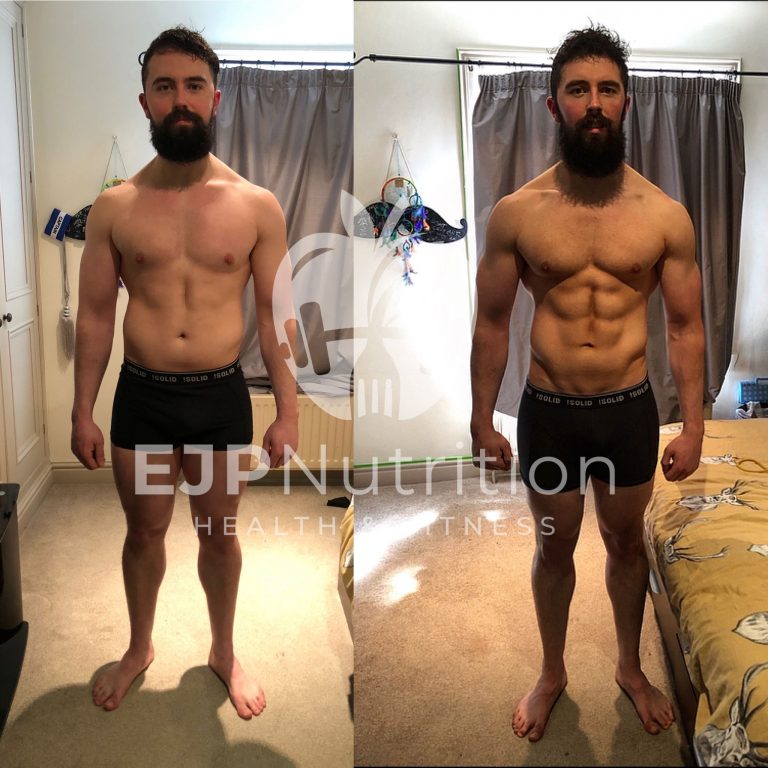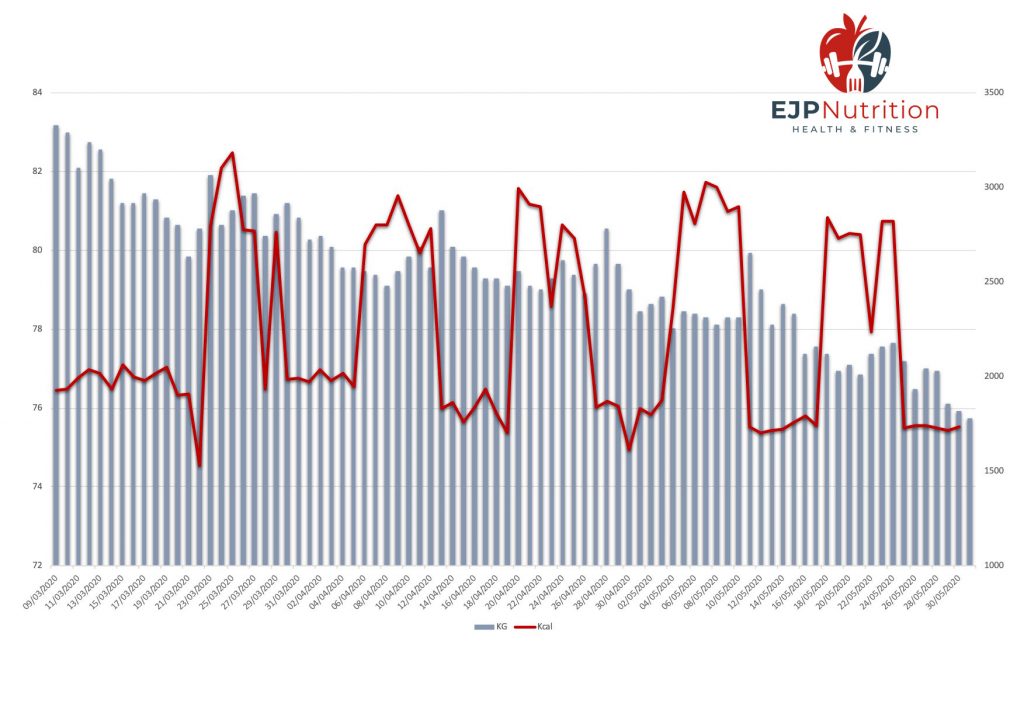
Mike and I have worked together for a while now. He’s my PT, and we’ve recently launched an online coaching business together. He came to me just over 3 months ago to create a nutrition plan for a cut. He was sitting around 83kg. He wanted to diet for 12 weeks, and get down to ~76kg. He’d then “live” at that weight while building strength, to compete in Powerlifting in the lighter 74kg category. Previously he’d competed in the weight class above that.
Mike is experienced in tracking calories, and has done dieting phases before. With a very clear goal, and a reason behind why he wants to get to that weight, he was highly motivated. Previously he’s done standard cuts with a consistent deficit over the whole dieting period. However, I though I’d put forward a slightly different option this time!
Rather than a constant deficit I proposed we went with an aggressive start for 2 weeks, and then alternated the remaining 10 weeks at maintenance followed by an aggressive deficit. The dieting weeks would be at an approx 7700kcal deficit (which equates to 1kg of fat loss). We’d keep the protein high to retain as much LBM as possible. NEAT drop-offs would be attenuated by upping his step count as the diet progresses.
The diet break weeks at maintenance he’d use the majority of the “extra” calories on carbs. This would hopefully help to minimise metabolic adaptation, as well as increase leptin levels and help fight diet fatigue. Mentally this plan of a week hard dieting, followed by a big jump up to maintenance was also to help the psychological side too.

Here you can see Mike’s weight (the line) and his daily calorie intake (the bars). As we went with a flexible approach we were looking at a consistent average for each week – but within a week high and low days to fit around life(!) was fine, and encouraged! Each week he was given ranges for total calories and protein. Again this gives a bit more flexibility than fixed numbers to hit.
Q: So, we’re done! How do you feel?
A: “Really good, and extremely happy with how everything went the aim was to get down to 76kg, and this morning I weighed in at 75.5kg. Normally whenever I’ve done a cut or comp prep I get a little low feeling when it’s “ended” but this time it’s different aa you’ve put together and “After” plan for me, so it’s just the cutting part has now ended.
Cant wait to gain some strength now.”
Q: How did you find the intermittent diet plan compared to constant dieting which you’d done before?
A: “I was a little apprehensive at first because the thought of going that low was daunting. However after I’d got my head around it and planned my meals (I’m anal in the respect) it was fine. I also think getting those first two weeks in low first really helped me as I knew if I could do those I could do 1 low week at a time with ease.
All in all I found the mental side of things so much easier than being in a constant deficit like I’d done before.”
Q: What was the hardest part of this plan?
A: “I’m honestly not too sure. It was pretty straight forward to be fair. I did struggle a little in the last week with feeling “foggy” and my concentration went a little bit. But other than that it was fairly comfortable.
Would’ve been interesting to see how I would’ve gotten on not in lockdown. With meal times and training being all over the place due to work and the fact I had a few weddings and social events that got called off because of Covid.”
Q: How was training? Both in high and low weeks?
A: “On the low weeks I didn’t feel too much difference in strength or my energy levels when training. Recovery was possibly slower the past 2-3 weeks and when out on long walks during low weeks my legs got quite heavy faster than normal.
I struggled a little on high weeks as at the start of the week I’d get a little over excited and have quite a carb heavy meal (which I wouldn’t normally do) and that carried over into my training of feeling very full and a little sleepy.
Towards the end of the week though training was awesome and on the high weeks and I could bring a lot of intensity to my sessions.”
Q: Would you use this method again?
A: “100%. I think if you can handle to low weeks it’s a very effective way to do it as the mental side of things is so much easier knowing you’ve only got shorter times of dieting before going back to maintenance again.”
I posted on metabolic adaptation recently. Part of putting Mike on this plan was to try and reduce this. We’ll be looking at his maintenance over the next weeks and couple of months. But it will be interesting to see how his new walk-around post-diet maintenance compares to what we’d predict for someone his current height/weight/activity.